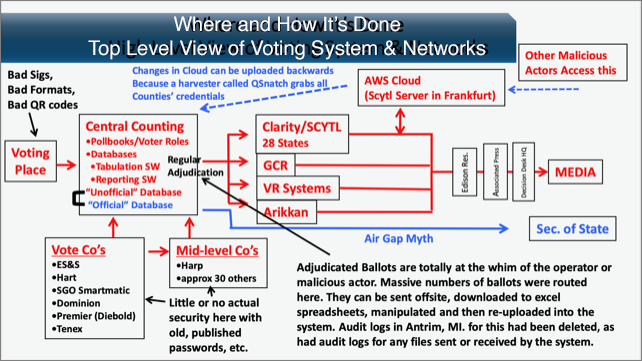“Conspiracy theories are different. They’re just theories. Most have no evidence to support them. They often connect unrelated facts to create an impression of plausibility.” There’s at least one good way to spot one, too. A conspiracy theory, that is. They often start with a seemingly benign assertion. Any sentence that begins with “given that” is a dead giveaway. Consider the case of the muddy boots.
“Given that her boots were muddy” leads to “and given that the body was found on a river bank” you end up with, “She must have killed her husband.”

Well, okay then. We can examine that one, can’t we. There are two facts asserted. Are they connected? The mud on the boots — does it match the mud at the river? What is the source of the mud on her boots? Was she gardening? Does she work outdoors? Was it really mud?
More Boots
Keep going. Does she have an alibi? And what the hell was her husband doing at the river? How did he die? Natural causes? Or was a weapon found nearby? And if so, was it murder — or suicide? Was it her gun? Or his? What about none of the above?
Her muddy boots are a coincidence UNLESS we can find evidence that ties them to the death of her husband. Otherwise, the two facts are unrelated. Easy-peasy, right?

Let’s Try Another One
Maybe that one was too easy. Easy conspiracy theories rarely work. People crave complexity. Somehow, complexity makes things more believable. So here you go…
“Given that two witnesses identified the suspect” gets tied to “and given that the two witnesses are slightly insane,” which gets tied to “and given that the murder looks like more than one person was involved,” which gets attached to “and given that the murder suspect is insane,” you end up at a very logical conclusion. “There are multiple killers and they’re likely insane.”
That’s pretty nonsensical and not at all helpful. What if we instead said, “Then the slightly insane witnesses were also somehow involved in the murder?” Because, you know, it takes one to know one.
You see. We made a logic jump there. Actually, two. One an obvious and implausible one. The other less obvious but no less implausible (unless we can find better evidence). Adding “and then the witnesses’ car got in a wreck” doesn’t help out in the least. But a dedicated conspiracy theorist would definitely add it for good measure. You know, because they were escaping the scene of the crime in great haste.
Why else would they get in a car wreck?
UPDATE
I recently came across a stellar example of a complex conspiracy theory, presented in a graphical format. Can’t resist.
Note: Whoever made this stands as a rank amateur PowerPoint jockey. The original title text was, um, black – against a blue background. Un. Read. Able. Second Note: No way, no how do I endorse this bullshit. This thing “connects unrelated facts to create an impression of plausibility.” To take it further, I am being overly generous in calling anything on the slide “facts.” There’s so much crap on the image, it’s hard to know where to start. That’s the point. It is complexity designed to defeat reason.

Thoughts prompted by the Investor murders. The original manuscript, started in 1992 and based on court records from the Alaska State Archives, served as the basis for “What Happened in Craig.”
Copyright Leland E. Hale (2021). All rights reserved.

Order “What Happened In Craig,” HERE and HERE. True crime from Epicenter Press.